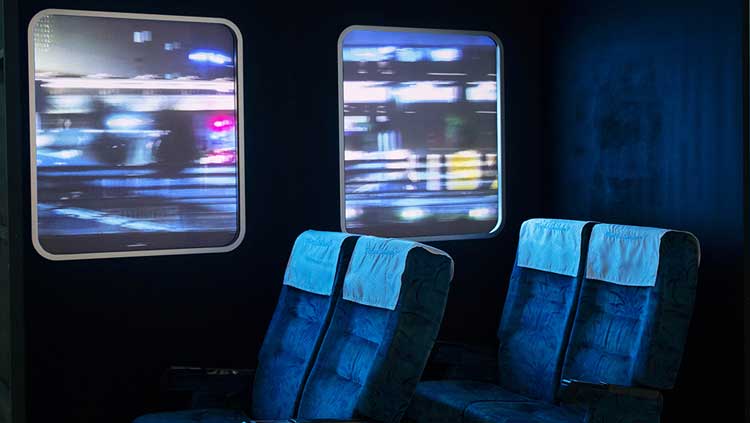
Moka Takeda, Day Tripper, 2023. Mixed media, dimension variable. Image courtesy Gyre Gallery, Tokyo.
Gyre Gallery, Tokyo
17 July – 24 September 2024
by KANAE HASEGAWA
This exhibition explores the continued relevance to Japan of the German artist Joseph Beuys, who died in 1986. It presents his work alongside that of six contemporary Japanese artists, who express their influences and responses to Beuys in their artworks. Beuys came to Japan in 1984, two years before his death and, during an eight-day stay, held workshops, lectures and discussions, which greatly influenced subsequent Japanese art. The exhibition seeks to explore Beuys’ thought and expression from a contemporary Japanese perspective.
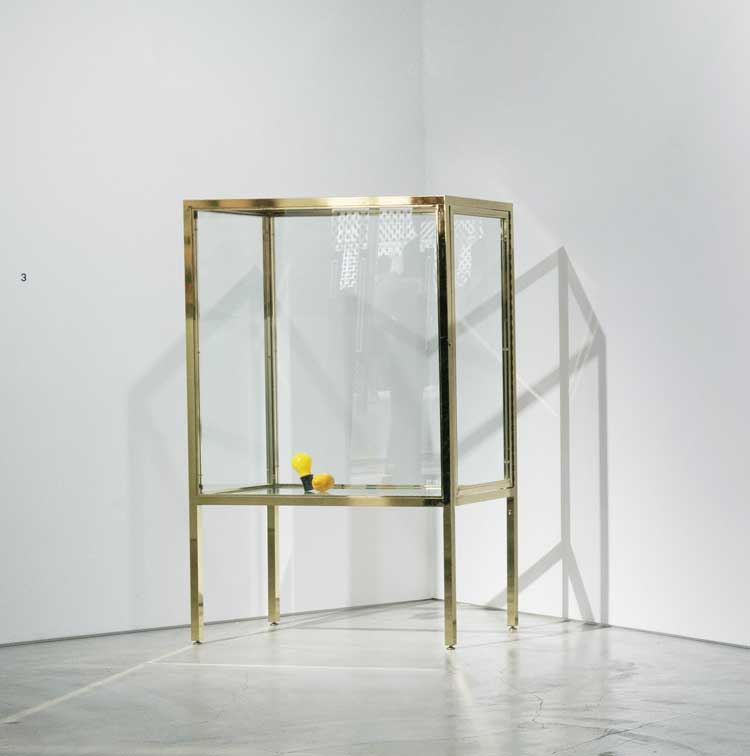
Joseph Beuys. Capri-Batterie, 1985. Light bulb with socket, lemon, vitrine cabinet. Image courtesy Gyre Gallery, Tokyo.
Beuys believed in an “expanded concept of art”. His view was that art includes everything from abstract works to sculpture to direct actions that could transform society. He believed that everyone could be an artist and he developed the theory of what he called “social sculptures”, many of which involved political and environmental concerns and public participation. Perhaps one of his best known of these is 7,000 Oaks, which he started in 1982 with the aim of planting 7,000 trees in the German city of Kassel, bringing in citizens to help plant them. Beuys championed the idea that people will willingly engage with society and create their own future, and that that is what art is all about.
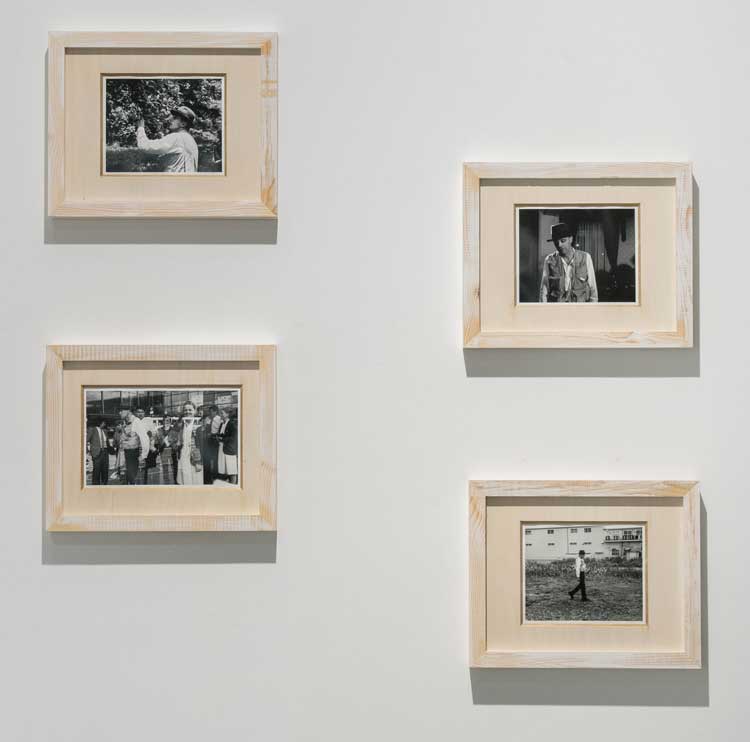
Naoya Hatakeyama. Joseph Beuys in Tokyo, 1984. © Naoya Hatakeyama.
The exhibition at Gyre Gallery starts with Beuys’ 1985 work Capri-Batterie, in which a light bulb is connected to a lemon. Does it really light up? The work expresses the relationship between man-made objects, nature and society. Alongside it are four portraits of Beuys taken by the photographer Naoya Hatakeyama (b1958), Joseph Beuys in Tokyo 1984. Hatakeyama spent several days observing Beuys during his visit, following him everywhere with his camera. To Hatakeyama, what meant more than Beuys’ words was “the fact that Beuys was in front of me, in motion, creating and advocating. I think it’s significant that the time spent with Beuys in 1984 is put up on the wall in front of an audience.”
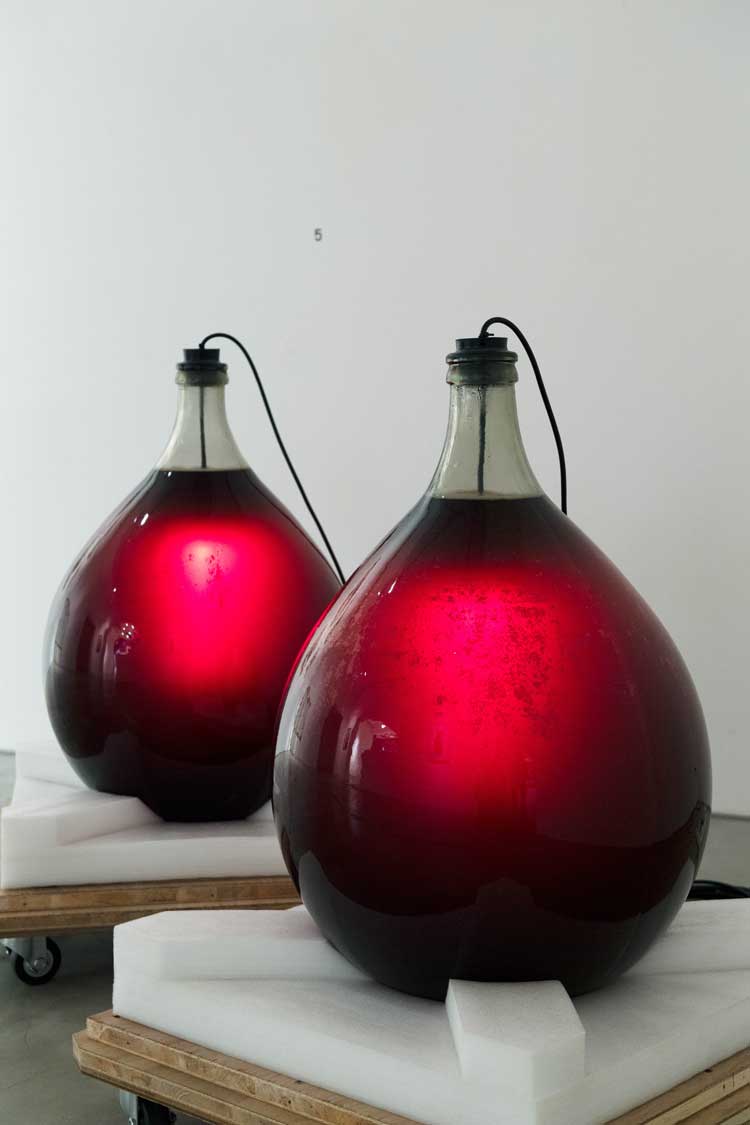
Hirofumi Isoya. Flowers and Bees, Translucent Archive, 2018. Fish gathering lamp, honey, bottle, 67 x 47 x 47 cm (26 2/5 × 18 1/2 × 18 1/2 in). Image courtesy Gyre Gallery, Tokyo.
In the same room, opposite Capri-Batterie, is Flowers and Bees, Translucent Archive (2018) by Hirofumi Isoya (b1978). The work comprises two glass bottles filled with honey, in each of which a fishing light is suspended. This work is a reference to Beuys’ interest in honey. As the honey is heated by the light, it changes consistency, reflecting the state of continuous change in our environment.
Isoya says: “Beuys’ work is built around events. I admire that. I think Beuys was someone who has shown that attitude is art. Moreover, that attitude equally applies to the audience. The audience is not just passively viewing an artwork, but rather is a proactive observer of it. Beuys’ work is like a wakeup call to contemporary society: what is the significance of democracy? What happens at the end of the capitalism?
“In the postwar revolutionary era in which Beuys lived, his provocations were effective,” continues Isoya. “But it is clear that society cannot change on its own, and the very act of tearing down the old and building up the new creates a cycle of disconnection and hatred. We already know that this alone will not solve the problem. What do we do? That may be the question of my work,” says Isoya.
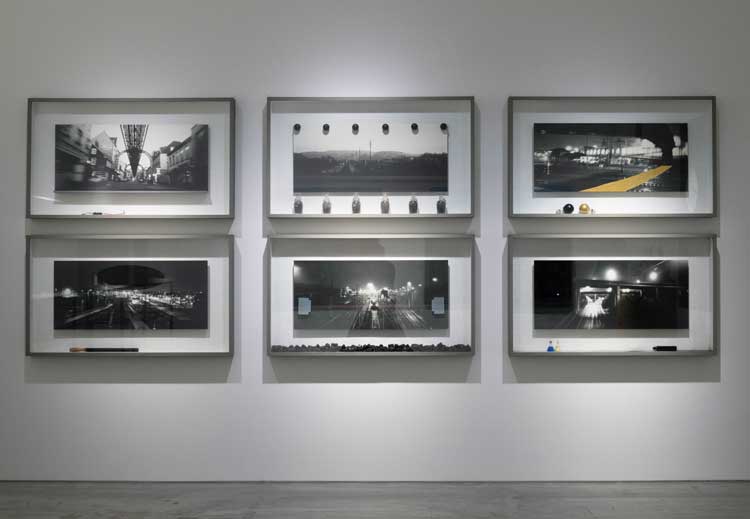
Kanji Wakae. Atmospheric pressure, 1988-89. Vitrine, photograph, object (set of six), each 70 x 120 x 71 cm. Image courtesy Gyre Gallery, Tokyo.
In the adjacent room, Kanji Wakae (b1944), who has been thinking about Beuys’ expanded concept of art since he was a young man, shows a series of six black-and-white photographs of urban scenes of roads and railways shot at night, entitled Atmospheric Pressure (1988-89). Produced in the 1980s, when pollution was a major problem in Japan, each photograph is enclosed in a glass-fronted frame along with an object or objects related to pollution – one has glass bottles containing soot, another bottles of acid rain and a third has lumps of coal. By seeing the photographs and the objects together, the viewer is confronted with the reality of the problem, a social message of which Beuys would have approved.
“Contemporary art is a testing ground for art, and Beuys dealt with politics and social reform. I learned from artists such as Beuys and created my work based on the idea of social experimental art,” says Wakae.
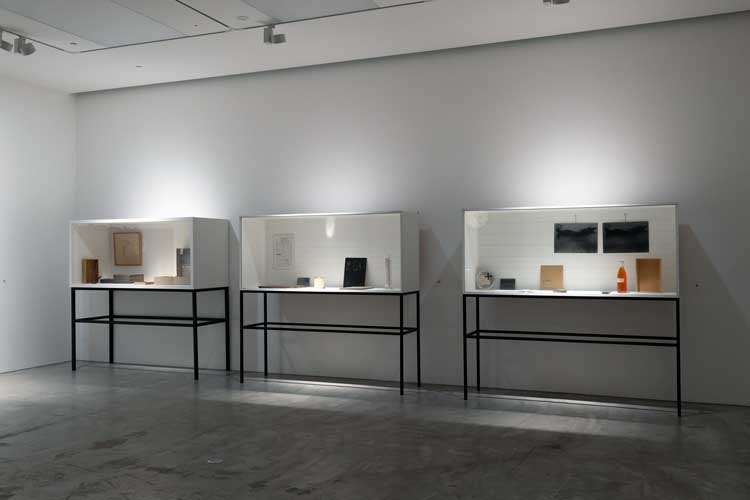
Kanji Wakae, Vitrines, installation view, Gyre Gallery, Tokyo. Image courtesy Gyre Gallery.
On display opposite are vitrines that Wakae has created in homage to Beuys, who popularised their use, turning them into works of art. In them, Beuys arranged humble materials that appeared to have been saved from the past and seemed to tell a story. Beuys’ vitrines echoed the glass cases he had seen used to display relics at the Auschwitz-Birkenau Museum, a reminder to the viewer of the boundary between life and death. At the same time, it was a way to illustrate the shift in value from commodities and artefacts to works of art. Beuys’ vitrines will continue to carry a strong message as long as there are wars.
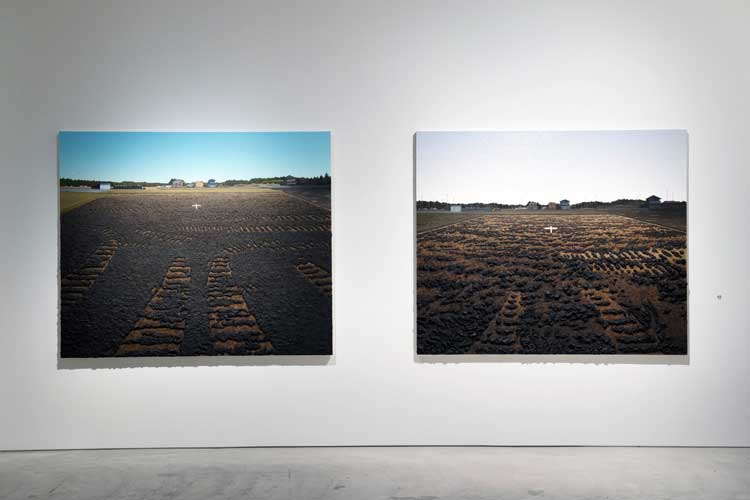
Akira Kamo. The Soil as Planet/The Soil as Reconstruction, 2023.
Oil on canvas, compost pigment, 194 x 162 cm. Image courtesy Gyre Gallery, Tokyo.
Next to Wakae’s works is The Soil as Planet/The Soil as Reconstruction (2023), a series of paintings by Akira Kamo (b1982), which depict an area of Fukushima just after decontamination had been completed following the nuclear accident in 2011. “I think the species Homo sapiens is slowly heading towards extinction, just as the Mesopotamian civilisation died out, just as the Egyptian civilisation died out. But still, I still don’t want to become extinct. I want to express myself in order to prolong extinction,” Kamo says, explaining how he conveys his thoughts through his work.
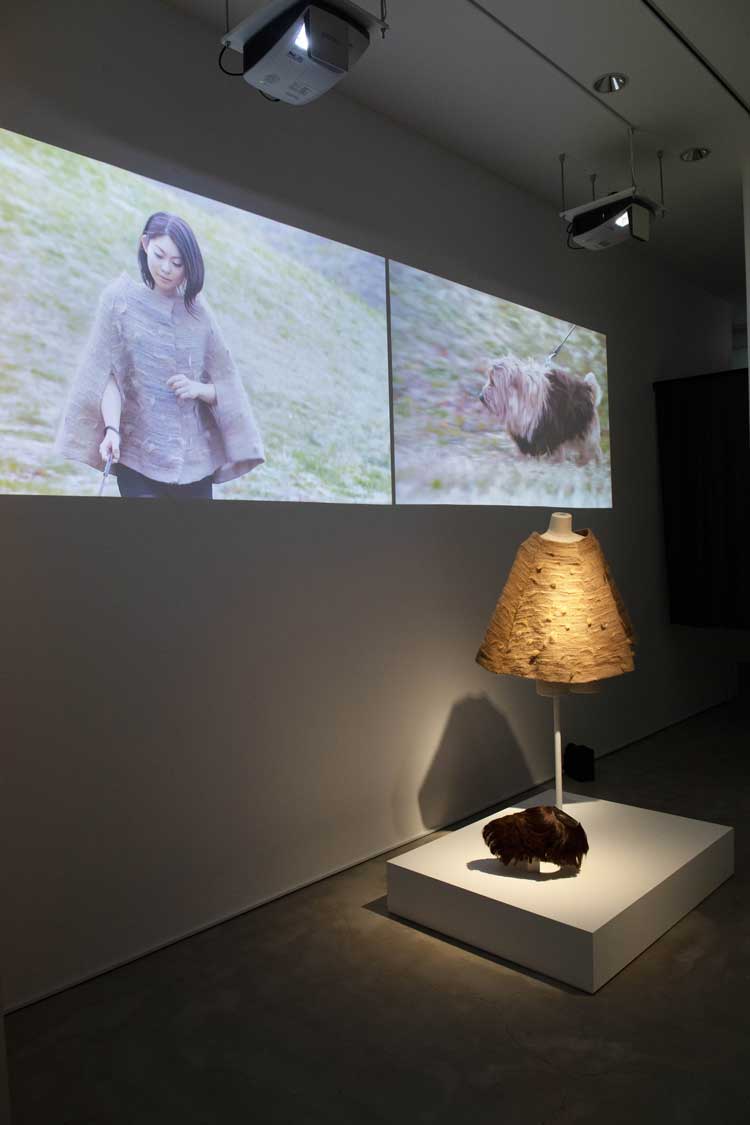
Aki Inomata. I Wear the Dog’s Hair, and the Dog Wears My Hair, 2014. Cape made of dog’s hair for a human, a cape made of human hair for a dog. Image courtesy Gyre Gallery, Tokyo.
In the next room, Aki Inomata (b1983) is showing her two-channel video I Wear the Dog’s Hair, and the Dog Wears My Hair (2014), with accompanying objects, in which a barber trims her dog’s hair, and a weaver makes a garment out of it, while Inomata has her hair cut and woven into a garment for her dog. “Beuys was involved in oak oak-tree-planting projects and the formation of political parties. Politics can be thought of as a yes or no decision-making mechanism in society, but the artist’s sensibility is not necessarily dependent on it, but works with ambiguity and openness to alternative possibilities. Therefore, there must be a contradiction or conflict between social decisions and individual sensibilities. Beuys’ social sculptures are forced to face such conflicts, and in turn, I think they ask us to face the challenges we face today,” Inomata says of what Beuys’ attitude can mean in contemporary society.
The final space displays Day Tripper (2023) by Moka Takeda (b1997). This installation is an arrangement of train seats where viewers can sit. From the “windows”, they can see the scenery from the train while images of stories related to scenery and movement are projected on to a screen in front of them. In real life, people would probably be too obsessed with looking at their smartphones to pay much attention to the outside scenery. However, here in the “art” context, the audience will pay attention to what is happening outside the window. Takeda thus shows a connection with Beuys’ idea of “bringing attention to the indifferent”.
What relevance do Beuys’ attitudes and ideas have for today’s society? Hatakeyama says: “Perhaps because there has been so much emphasis on individual freedom and equal rights today, there has been a loss of awareness of the fact that humans are animal beings who form a society based on relationships of reciprocity. Society is formed of community, not just accumulation of a herd.
“However, nowadays it seems people are more interested in forming a herd than in preserving society. Humans and individual beings are not the same,” Hatakeyama says, with a slight air of despair. “If Beuys were alive now, he would probably tell us to be human beings instead of artists, which he championed while he was alive.”